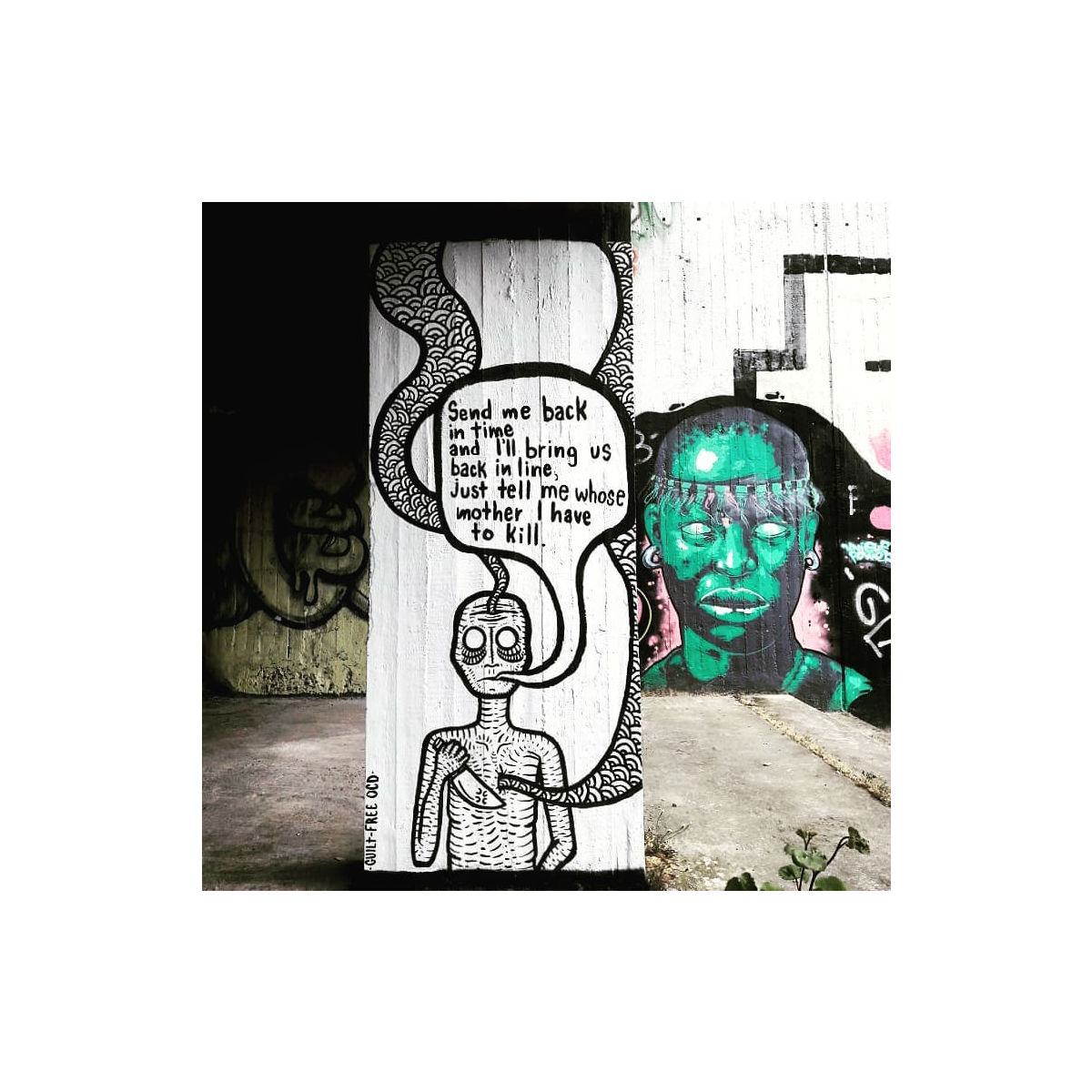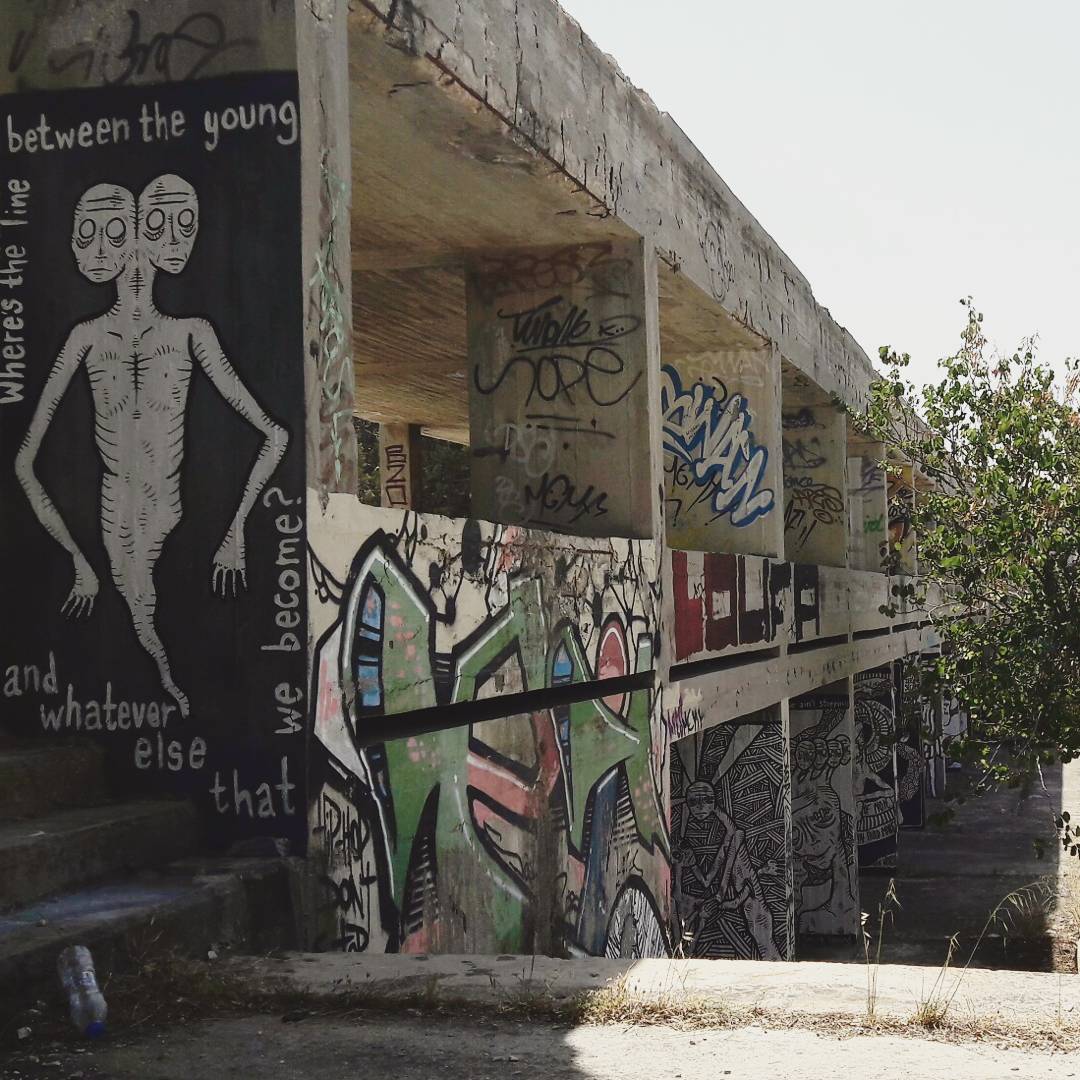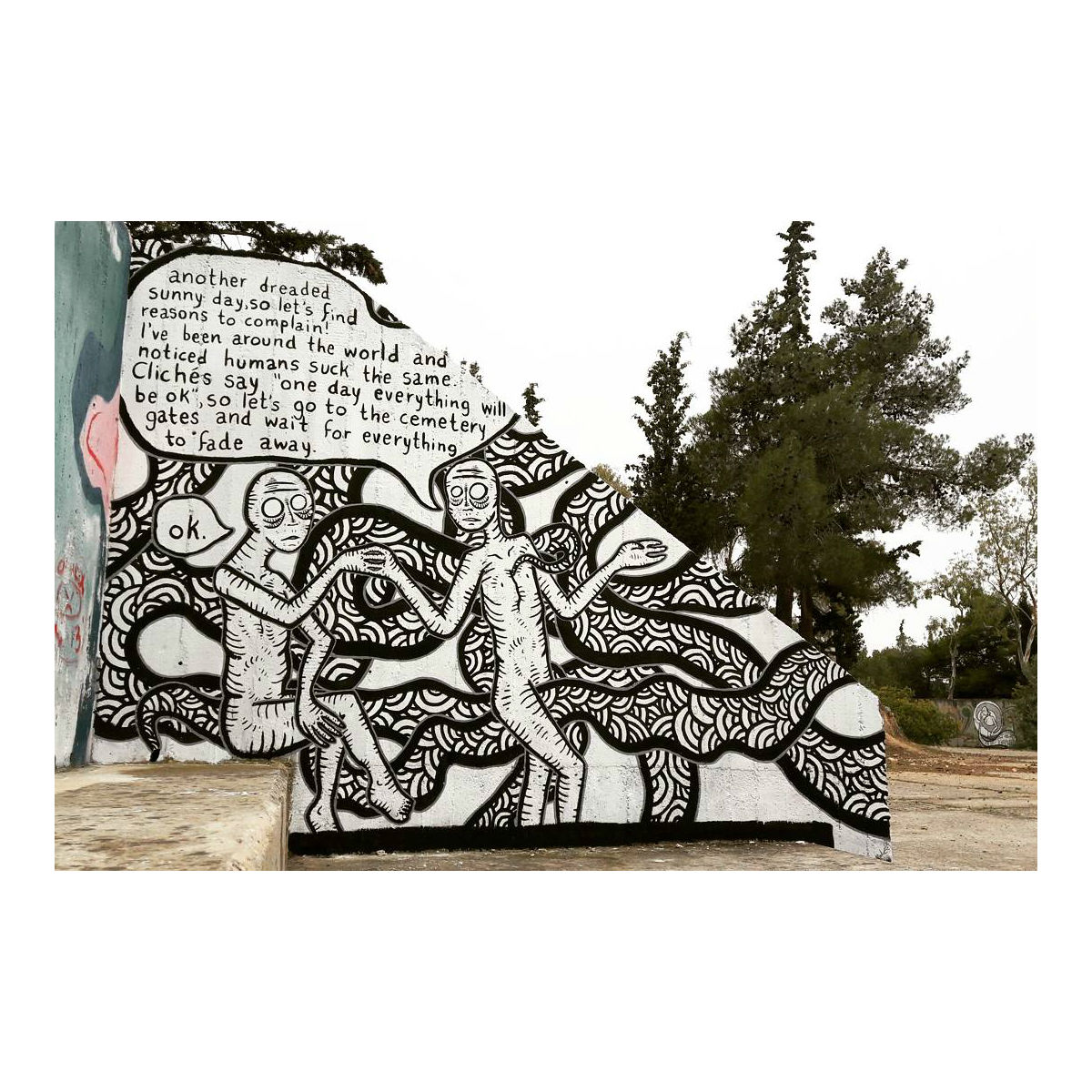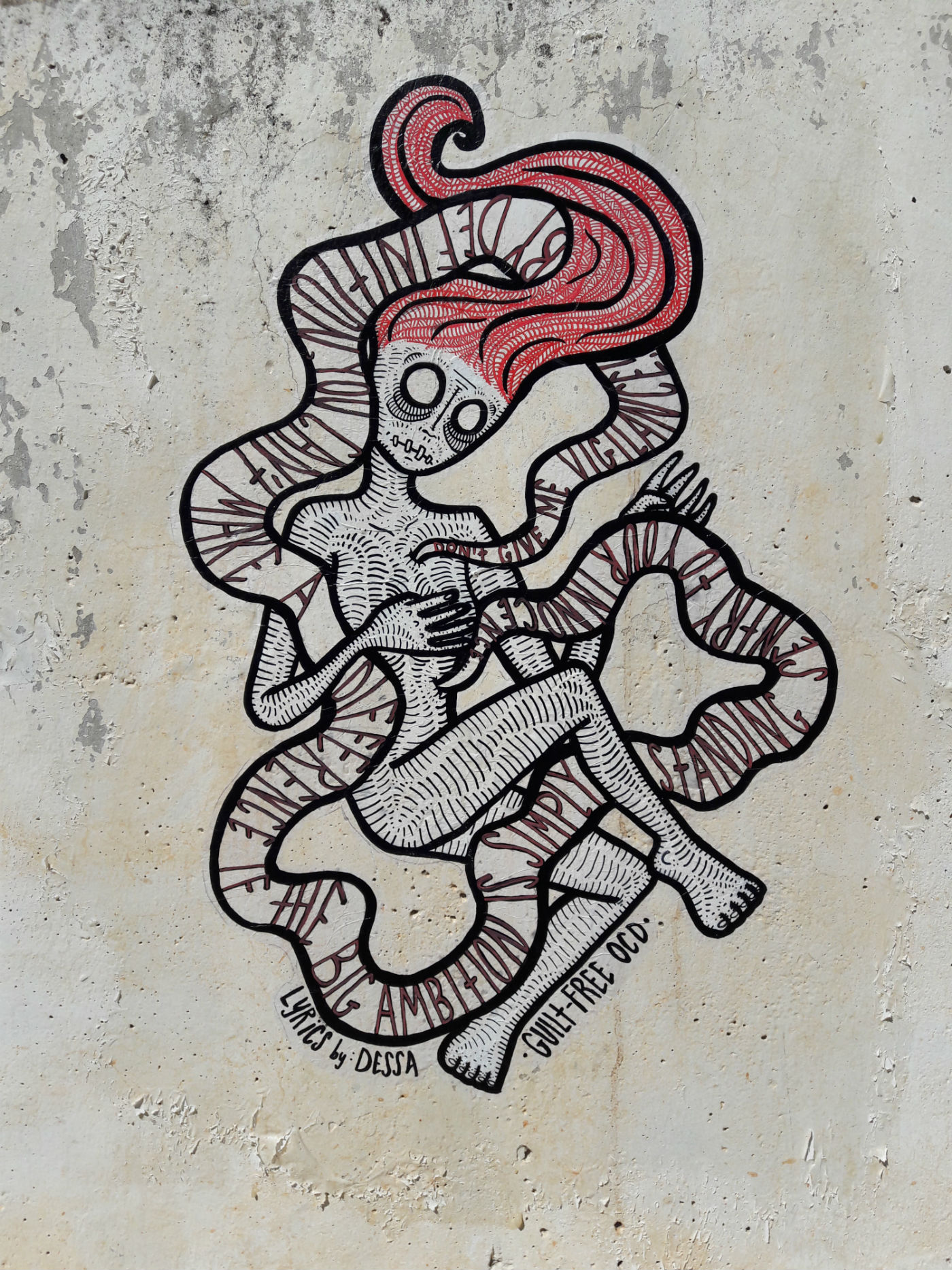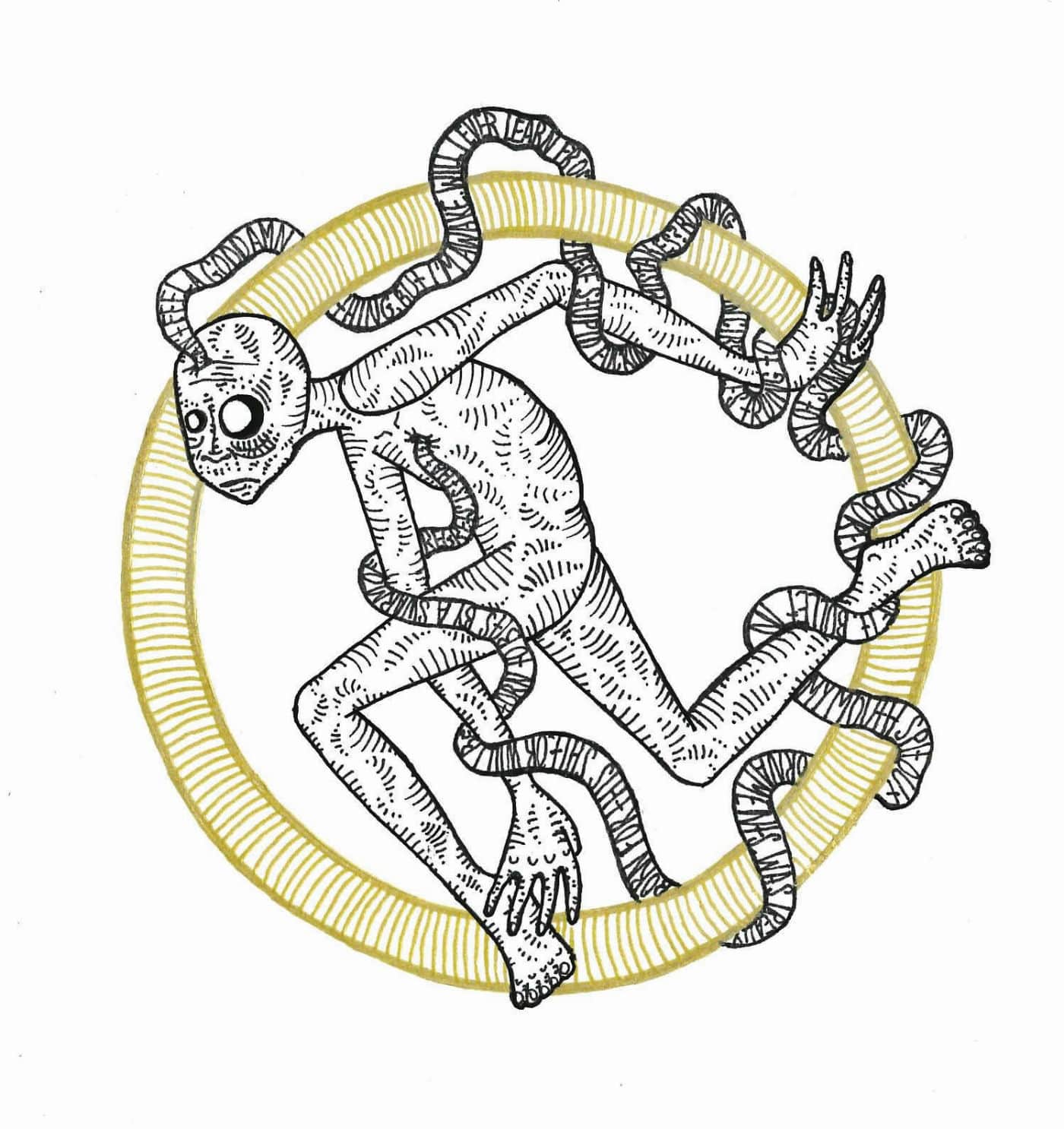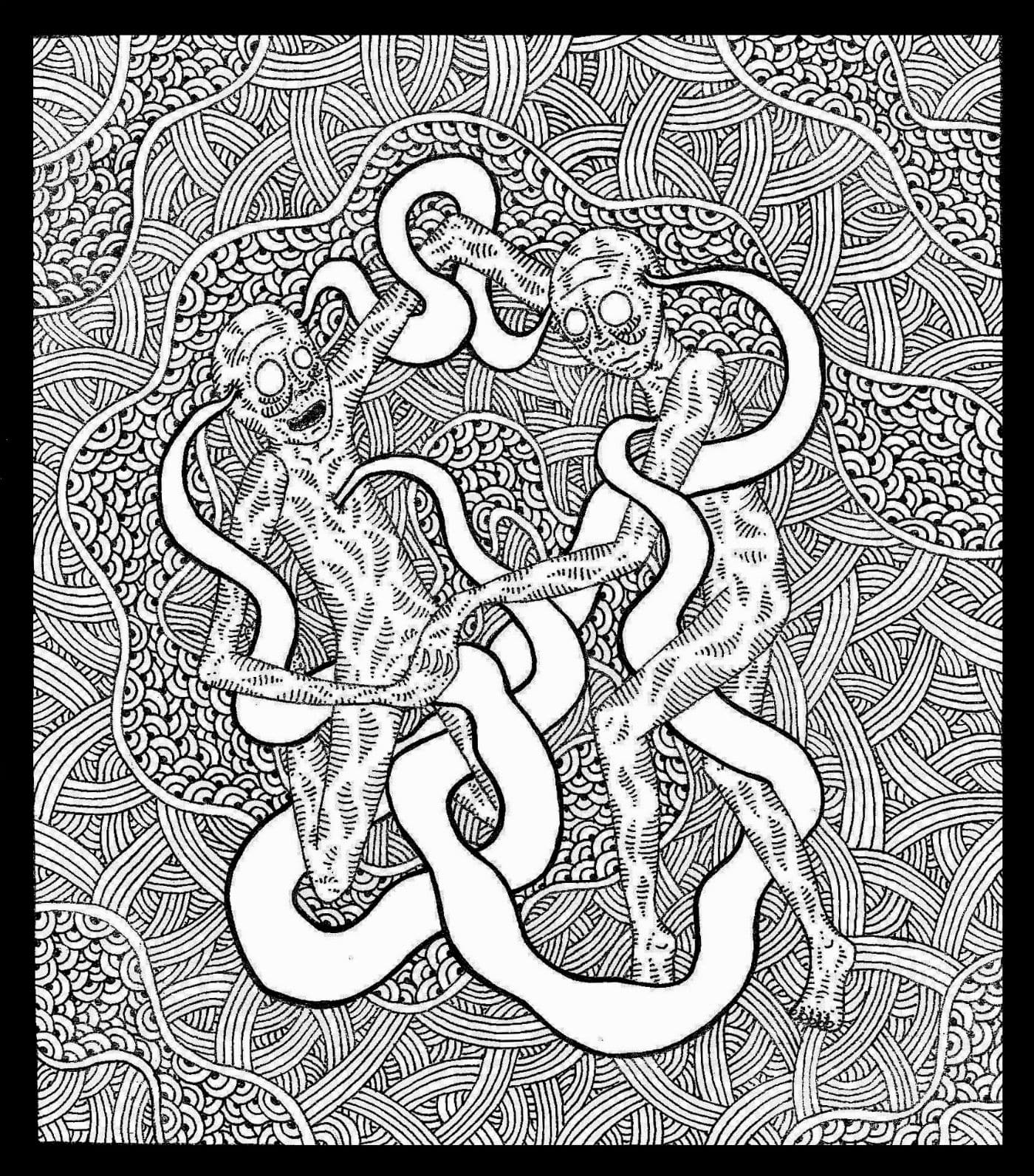In the work of Greek street artist Guilt-Free OCD, white humanoid forms appear to be paralysed with anxiety as they come face to face with life’s most difficult questions. A ballerina-turned-theologian, the artist has completed two masters degrees in theology: one on how stringent punk and other subcultures can become a substitute for spirituality and the second one about the epistemology of theology and religion studies as defined by academics in the Netherlands, Belgium and Greece. She’s currently working on her PhD in Belgium and researching how agnostic and atheist people understand and define the idea of the divine.
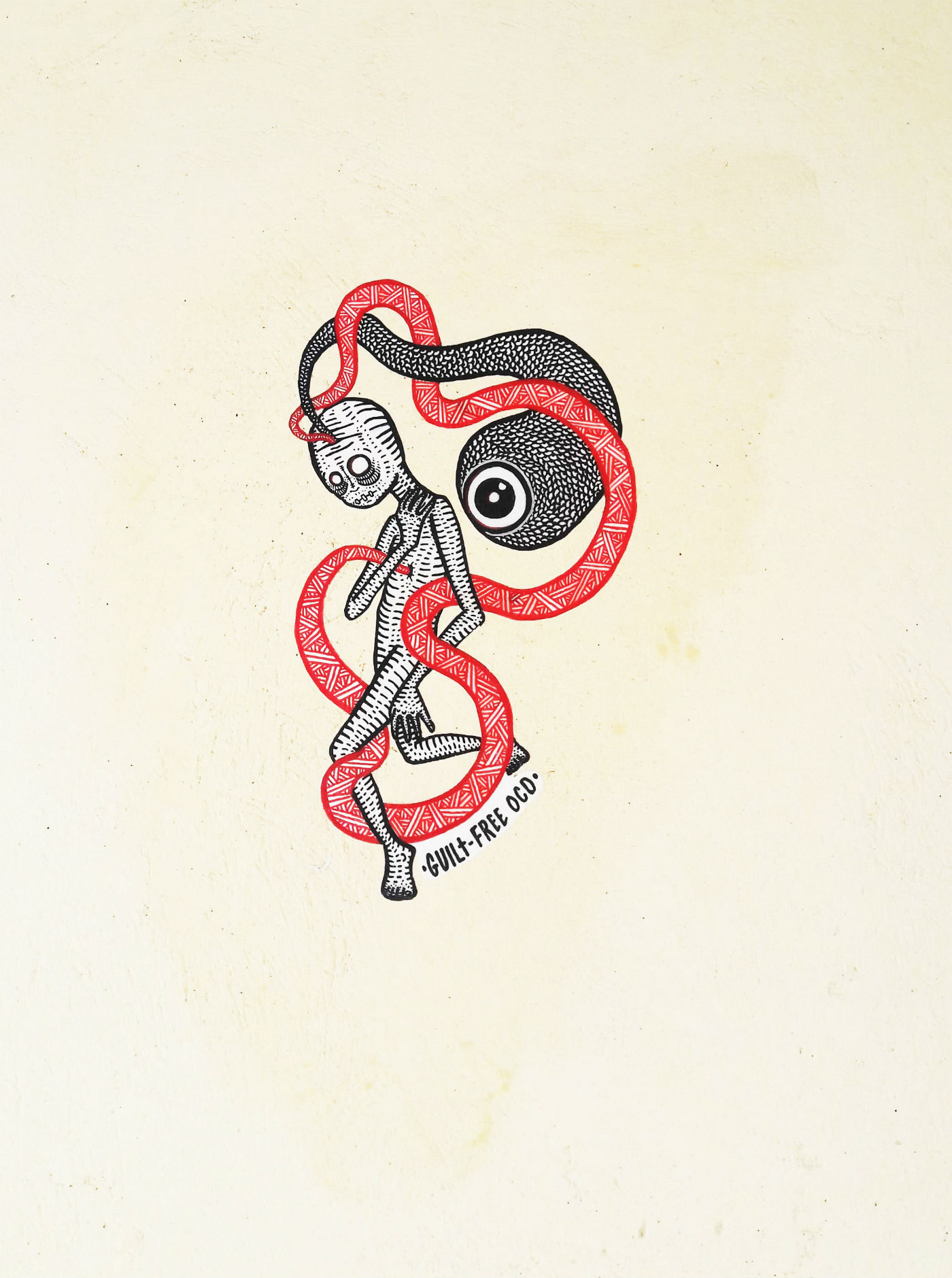
Guilt-Free OCD began drawing during her first years at university; in fact, the abandoned areas behind the Theology School at Athens University campus in Zografou was the site of her first public works. As she explains, her first wall drawings were protesting for various church-related issues, such as the case of a rape victim in Cyprus who was being abused for years as a child by the priest who adopted her. The cartoony appearance of Guilt-Free OCD’s characters belies the sobering messages they are trying to convey: “At first I began drawing on the walls of my school as a protest, and later on it became more personal. Now it’s more about the anxiety one feels when thinking about our place in the world, spirituality and so on. This is why most of my characters have an eye coming out of their heads and looking back to themselves.”
Conceived as little self-portraits, Guilt-Free OCD’s “humanoids” are meant to express what the artist was feeling at a specific moment. Personal stories, her relationships with friends and other experiences inform her drawings, which manage to convey their emotional complexity and the paradox of human relationships in a subtle but poignant way. Some figures are depicted on their own, floating as if in non-gravity and surrounded by ribbons of meticulously embellished self-doubt. Others exist in groups of three or more, their bodies connected at the joints to create an uncanny sense of togetherness and confusion. As the artist explains, the main feeling these illustrations express is despair, as in when we feel the world makes no sense and we’re trying to accept philosophical frameworks we can’t really explain.
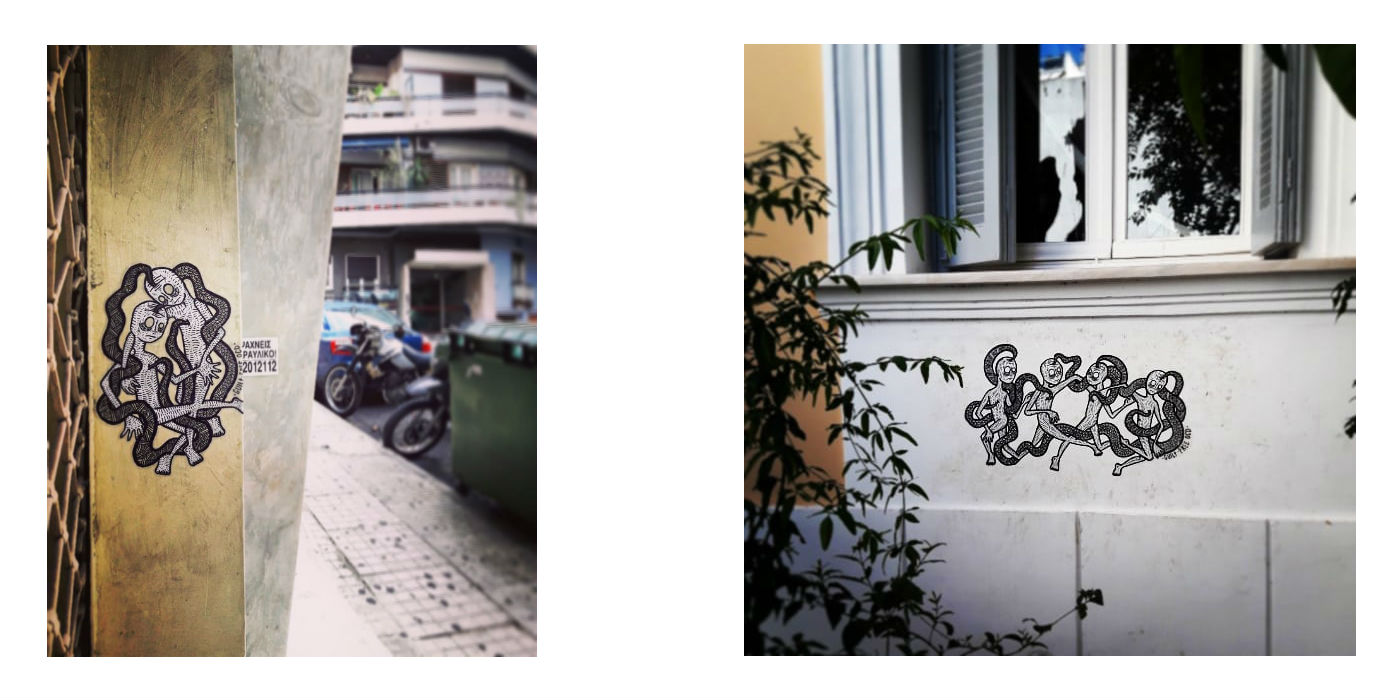
“This whole project is about my anxiety whether I’ll be able to exist within all this in harmony,” says Guilt-Free OCD over our Instagram video call. “I’m asking whether it’s possible to not feel anxiety but to accept this situation as it is. Even agnosticism can be very absolute, so I try to adapt. I know a lot of people who are believers, and when they tell me what they believe in I respect that. I haven’t arrived at any big conclusions, but I guess I’m now more used to this contradiction. There’s definitely a contradiction there, but it also makes sense to live as part of something and accept things as they are. It’s also a bit Buddhist, I suppose.”
Her street art alias comes from the fact that she is diagnosed with OCD, but she’s really conscious about how it affects her life. Interestingly, drawing is one of her main strategies to cope with her condition. "Repetition calms me down. In fact, repetitive movements strengthen the mind and calm down your brain. I’ve come up with some of my best ideas while drawing repetitive lines. It also has to do with the amount of reading I have to do for my work: the more I read the more I need to draw. Drawing helps me concentrate and focus on my own issues, to put my thoughts in order and become better. I think I was using ballet for the same reason when I was younger.”
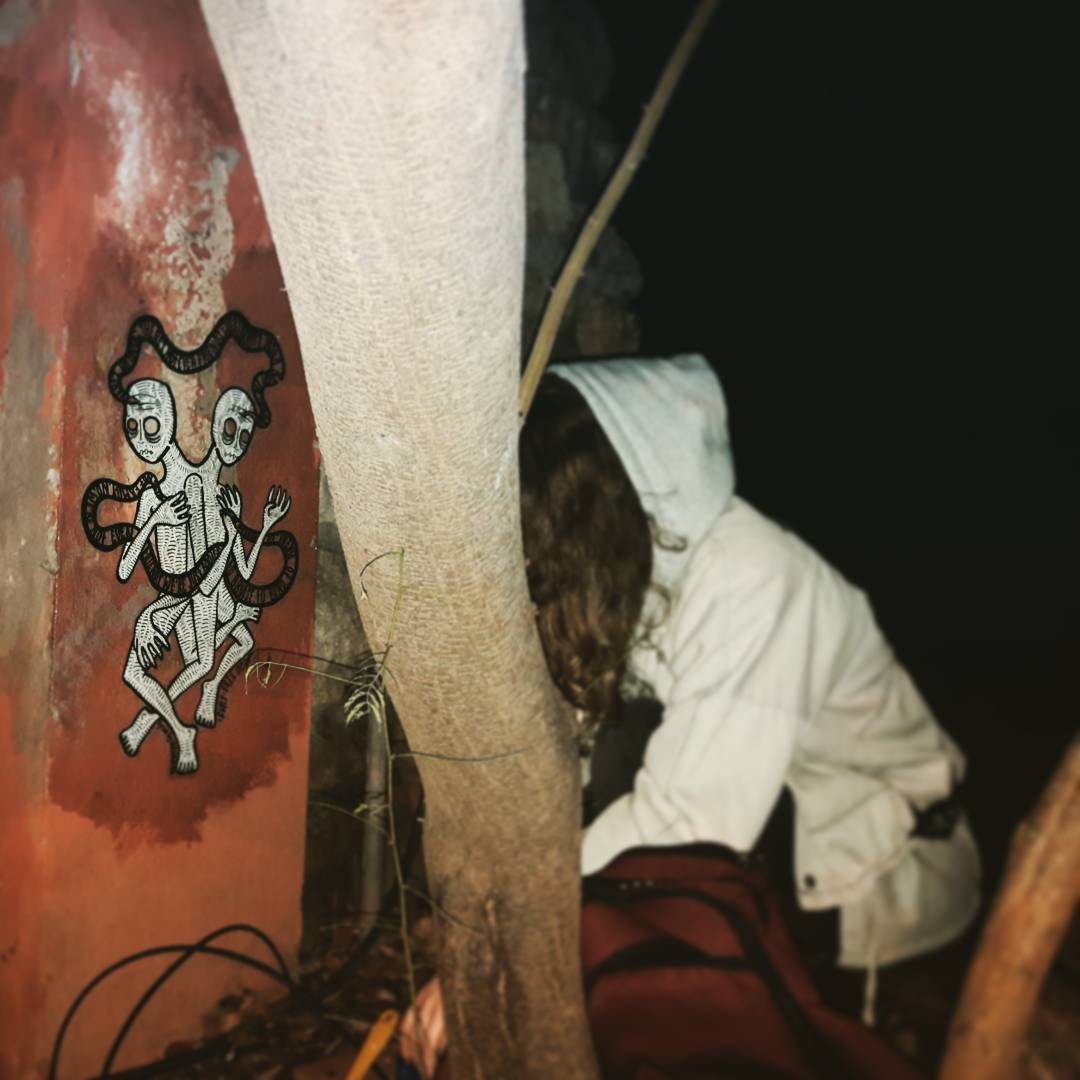
Guilt-Free OCD actually grew up with ballet and was training to become a professional dancer. But an injury in her late teens forced her to quit. “For three years nobody could diagnose the problem in my knee,” she remembers. “I was training as a ballet dancer from 3,5 years old until I was 18, so imagine how depressed I was when I couldn’t dance anymore. I had to find something else to do, and I literally got in theology school by accident. The first couple of years were really boring, but in the third year I discovered that there was something there for me, and I pursued it. Ballet teaches you to be very strict with yourself, and academia certainly has to do with that kind of self-flagellation so to speak. I guess the reason why I’m so good at academic work is because of that discipline.”
There’s certainly something dancerly in Guilt-Free OCD’s “humanoids”, especially in the nuanced way their body language is structured and the harmony of their movement. In fact, the artist finds a lot in common between dance and the sublime: “There is definitely a relationship between ballet and spiritualism. I guess it simply has to do with the fact that you’re in a room, alone or with people, and there’s music that makes you move even if you’re not dancing. To be in a room filled with the music you choose and to be able to move the way you feel is something sacred. The literature shows that dancers are connected to the spiritual, because it all has to do with the connection between myself and my body, and the part I play in the dance and my surroundings. The whole thing is actually so harmonious that it’s impossible to not see the spiritual aspect in it. I guess some people dance as a way of working out, but for people who grew up in dance is definitely a spiritual thing.”
You can find many of Guilt-Free OCD’s works in the streets of Athens, mostly as pastes on walls and windows. You can also follow her on Instagram and Facebook and keep up with her work as it appears on a street near you. Guilt-Free OCD is also this month’s featured artist on the und. Cover project, so head to our Facebook page to see the artwork she created for us.
